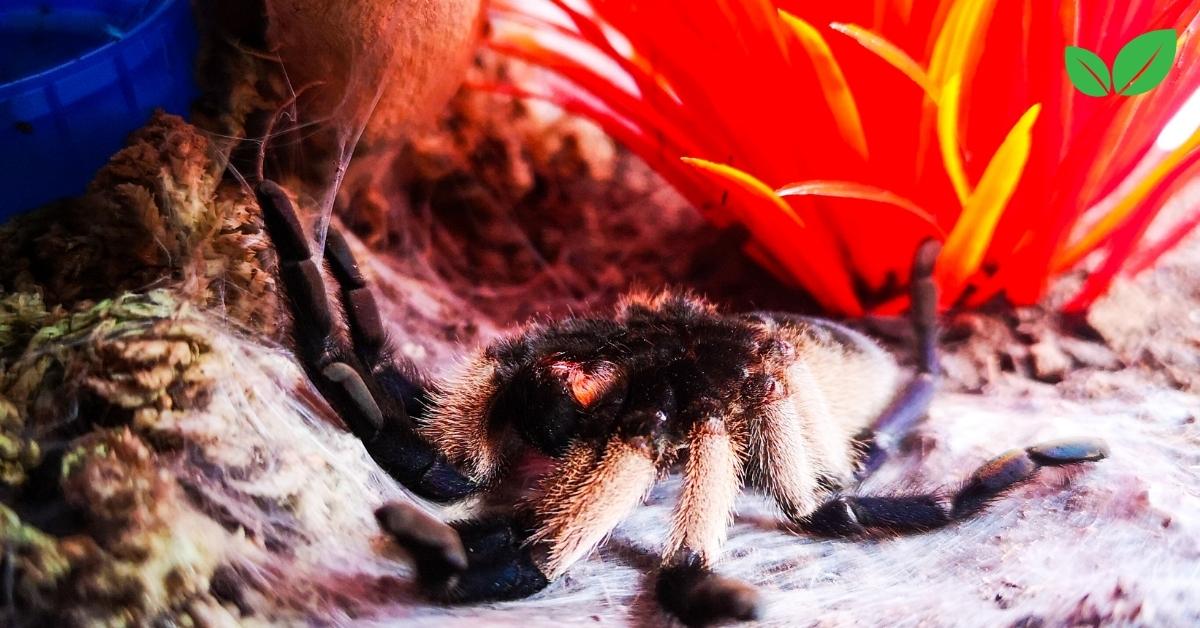Monocentropus balfouri, commonly known as the Socotra Island Blue Baboon, is a captivating tarantula species renowned for its striking blue coloration and unique ecological adaptations. Endemic to Socotra, an isolated archipelago located in the Arabian Sea, this tarantula has evolved distinct characteristics that allow it to thrive in its environment. This article provides an in-depth look at the environmental niche of Monocentropus balfouri, including its habitat, behavior, diet, adaptations, reproduction, and role in the ecosystem.
1. Introduction to Monocentropus balfouri
Monocentropus balfouri is part of the Theraphosidae family, which encompasses various tarantula species. Its vivid blue hues and cryptic lifestyle make it an object of fascination for arachnologists and hobbyists alike. The tarantula is exclusively found on Socotra Island, a UNESCO World Heritage site known for its high level of endemism and unique biodiversity.
The Socotra Island Blue Baboon tarantula is not just remarkable for its appearance but also for its ability to adapt to the harsh, arid conditions of its environment. Understanding its ecological niche can provide insight into how life adapts to challenging habitats and the importance of preserving such species and their ecosystems.
2. Natural Habitat
The natural habitat of Monocentropus balfouri is characterized by its unique geography and climate. Socotra Island, part of Yemen, is renowned for its dry, tropical environment with distinct seasonal patterns. The tarantula has adapted to survive in this isolated and often harsh environment.
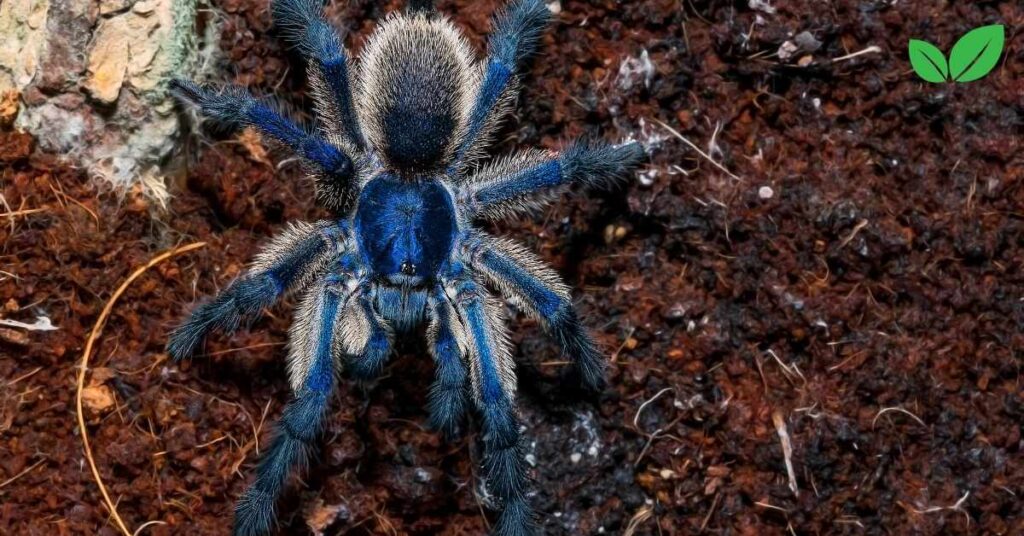
2.1 Climate and Geography
Socotra Island features a semi-arid climate with hot temperatures that can range from 77°F to 104°F (25°C to 40°C) during the hottest months. Rainfall is limited and mostly seasonal, with some regions experiencing sporadic, brief rain showers that help sustain the limited vegetation. The island’s terrain includes limestone plateaus, rocky outcrops, sandy plains, and a variety of caves and crevices that provide shelter for many species, including Monocentropus balfouri.
The vegetation is sparse but includes endemic plants such as the iconic Dragon’s Blood Tree (Dracaena cinnabari) and Socotran Cucumber Tree (Dendrosicyos socotranus). These plants are adapted to the dry environment and contribute to the ecosystem by providing shelter and organic matter that supports smaller life forms.
2.2 Microhabitats
Monocentropus balfouri can be found in specific microhabitats that provide the conditions necessary for its survival. It prefers rocky crevices, burrows, and shaded areas where temperatures are moderated, and humidity levels are slightly higher. These microhabitats offer protection from predators and the scorching daytime heat, allowing the tarantula to thrive despite the challenging external conditions.
3. Physical and Behavioral Adaptations
The environmental niche of Monocentropus balfouri is defined by its unique set of adaptations that enhance its survival and reproductive success. These adaptations are a result of the tarantula’s evolutionary response to its habitat’s constraints.
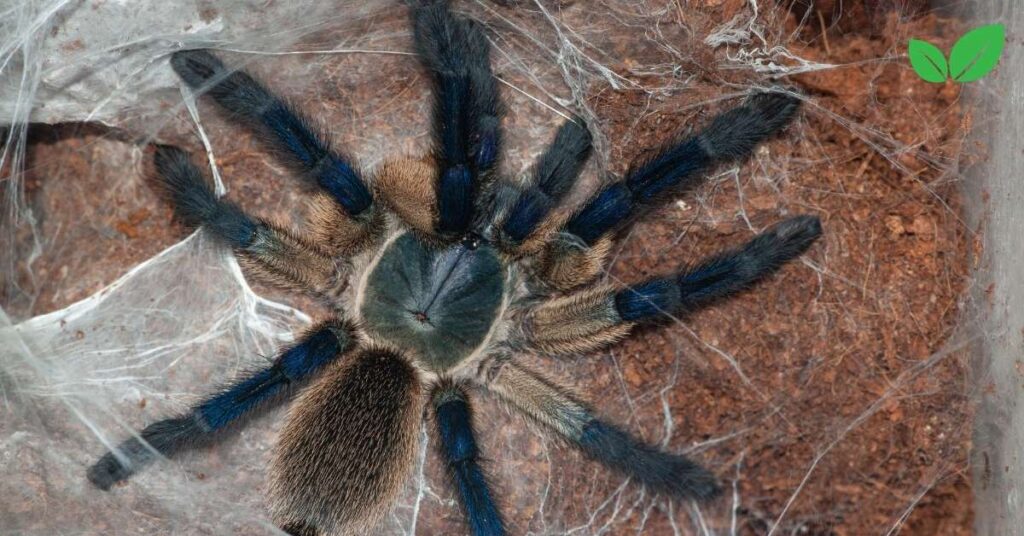
3.1 Physical Adaptations
- Striking Blue Coloration: One of the most notable physical features of Monocentropus balfouri is its vibrant blue exoskeleton. While the exact reason for this coloration is not fully understood, it is believed to play a role in signaling or camouflage within its rocky habitat. The reflective properties of the blue exoskeleton may help the tarantula blend in with certain rock surfaces and shadows, providing a level of concealment.
- Robust Exoskeleton: The tarantula’s exoskeleton is well-suited to withstand the arid and rocky conditions of Socotra. It offers physical protection against abrasion and potential predators while helping to minimize water loss through its tough, chitinous structure.
- Specialized Setae: The setae, or hair-like structures on its body, are highly sensitive and help detect vibrations in the environment. This adaptation is crucial for the tarantula’s survival, as it aids in detecting prey and avoiding threats.
3.2 Behavioral Adaptations
- Burrowing and Retreat Building: Monocentropus balfouri is known for its burrowing behavior. It constructs elaborate silk-lined retreats within crevices or underground, where it can regulate temperature and humidity levels more effectively. These retreats also provide a safe space for molting and resting.
- Communal Living: Unlike many tarantula species, Monocentropus balfouri exhibits communal tendencies. In the wild, these tarantulas can often be found cohabiting within a shared burrow or network of retreats. This behavior is highly unusual for tarantulas and offers several advantages, such as increased protection from predators and greater reproductive success due to close proximity to mates.
- Nocturnal Activity: The Socotra Island Blue Baboon is primarily nocturnal, which helps it avoid the extreme heat of the day and reduces the risk of predation. This behavioral adaptation is aligned with the activity patterns of its prey, making it more efficient as a hunter.
4. Diet and Feeding Habits
Monocentropus balfouri is an opportunistic carnivore, preying on a variety of organisms that it encounters within its habitat. Its diet reflects its role as a predator within the ecosystem, helping to regulate the populations of its prey species.
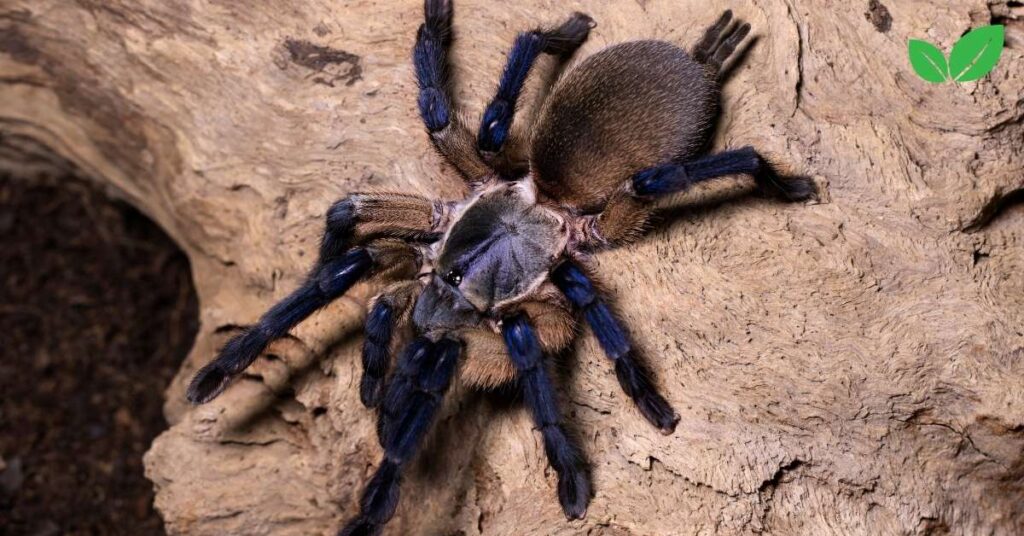
4.1 Prey Selection
The tarantula primarily feeds on insects such as crickets, beetles, and grasshoppers. It may also capture and consume smaller arachnids and occasionally small lizards if the opportunity arises. The availability of prey can be seasonal, depending on environmental conditions, which may influence the tarantula’s foraging behavior and success rate.
4.2 Hunting Strategy
Monocentropus balfouri is an ambush predator that relies on stealth and speed to capture its prey. It waits at the entrance of its burrow or retreat, detecting vibrations and movements through its sensitive setae. Once the prey comes within striking distance, the tarantula lunges forward, using its powerful chelicerae to inject venom and subdue the prey.
The venom of Monocentropus balfouri is potent enough to immobilize prey quickly but is not considered dangerous to humans. It contains enzymes that initiate the digestion process, breaking down the internal structures of the prey so that the tarantula can consume the liquidized nutrients.
5. Predators and Threats
While Monocentropus balfouri is a formidable predator in its own right, it still faces natural threats from other species and environmental challenges.
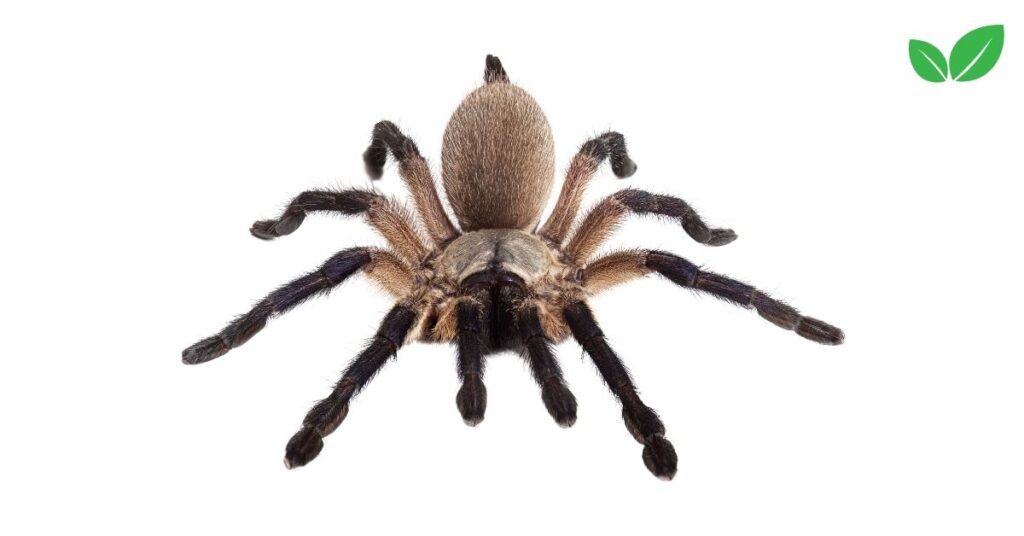
5.1 Natural Predators
The primary predators of Monocentropus balfouri include birds, larger lizards, and some mammals. Birds, in particular, pose a significant threat as they can spot the tarantula from above and use their sharp beaks to extract it from its burrow. Certain reptiles, adapted to the harsh environment of Socotra, may also hunt these tarantulas when the opportunity arises.
5.2 Human Impact
Although Socotra is relatively isolated, human activity can still pose a threat to Monocentropus balfouri and its habitat. The main human-induced threats include:
- Habitat Disturbance: Increased tourism and limited development can disrupt the delicate balance of Socotra’s ecosystems. Any alteration to the natural landscape, such as the construction of roads or buildings, may reduce available habitat for the tarantula.
- Climate Change: Changes in global climate patterns can affect the rainfall and temperature regimes on Socotra. An increase in temperature and prolonged droughts could reduce prey availability and impact the tarantula’s ability to maintain necessary hydration levels.
- Collection and Trade: Due to its striking appearance, Monocentropus balfouri is popular in the exotic pet trade. Although captive breeding programs exist, there are still concerns about illegal collection practices that could threaten wild populations.
6. Reproduction and Lifecycle
The reproductive behavior of Monocentropus balfouri is aligned with its communal tendencies and survival strategies.
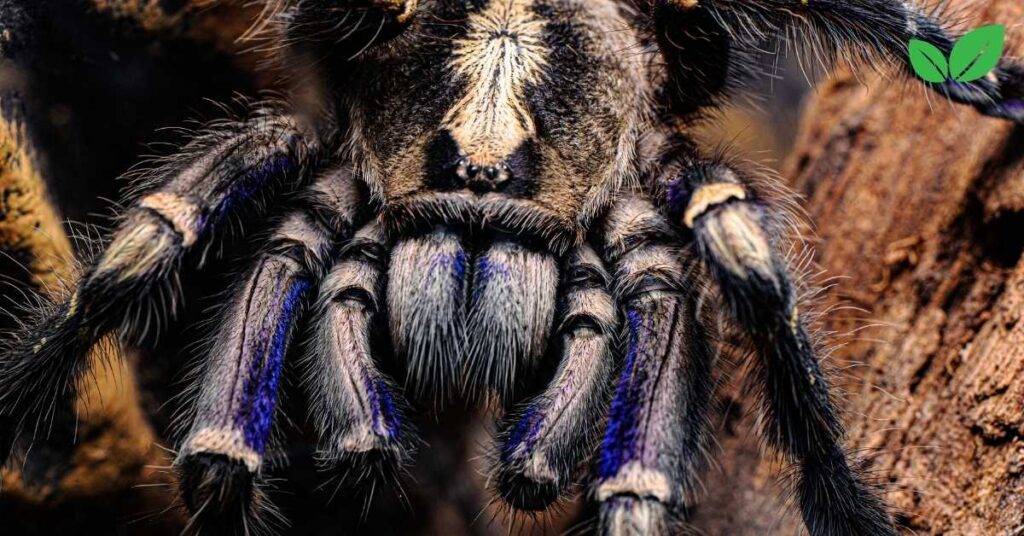
6.1 Mating Rituals
Mating typically occurs during the wetter seasons when humidity levels are higher, creating more favorable conditions for egg development. The male initiates the mating process by drumming his legs on the substrate to signal his presence to a nearby female. Once accepted, the male transfers sperm using his pedipalps, and the female stores the sperm for fertilization.
6.2 Egg Sac and Development
The female constructs an egg sac within her burrow and guards it meticulously. The sac can contain anywhere from 50 to 200 eggs, which she incubates for approximately 6 to 8 weeks. During this time, the female becomes highly protective and may even share the space with other females or juveniles in the communal structure.
After hatching, spiderlings remain within the burrow for several weeks, undergoing their first molt and learning survival behaviors through observation and interaction with other tarantulas in the communal group. This communal rearing is unique among tarantulas and provides the young with a higher chance of survival due to shared defense and resource availability.
7. Ecological Role and Conservation Status
Monocentropus balfouri plays a vital role in the ecosystem of Socotra Island by contributing to the balance of predator-prey relationships and nutrient cycling.
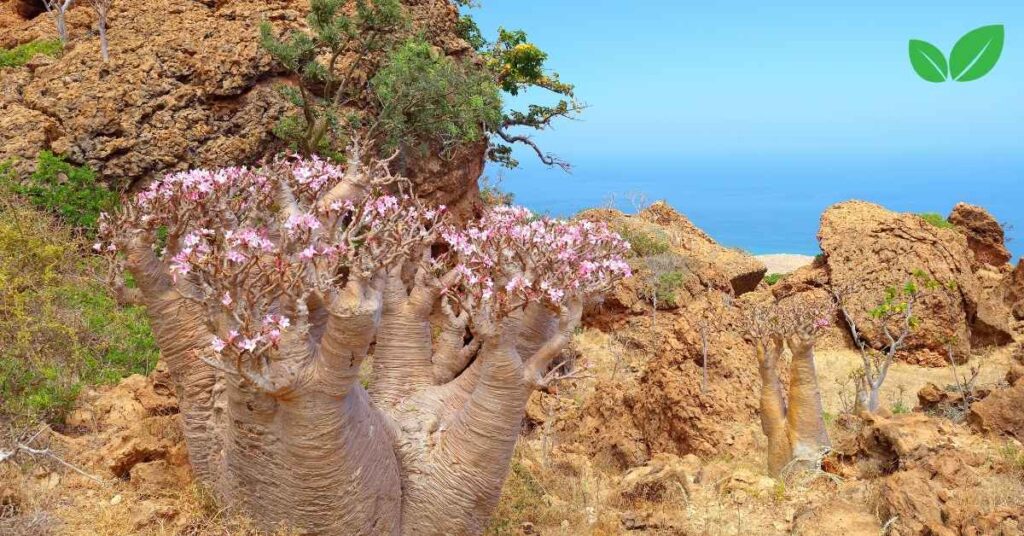
7.1 Role in the Ecosystem
As an apex invertebrate predator, Monocentropus balfouri helps control the populations of smaller insects and arthropods, maintaining a balance that prevents any one species from dominating the environment. This balance supports the diversity and health of the ecosystem. Additionally, the burrowing activity of this tarantula contributes to soil aeration, which benefits plant growth and nutrient distribution.
7.2 Conservation Status
Currently, there is limited data on the exact population size of Monocentropus balfouri in the wild. However, its restricted range and potential threats from human activities make it a species of interest for conservation efforts. Socotra itself is a protected area, recognized for its unique biodiversity. Continued efforts to preserve the island’s natural environment are essential for the long-term survival of Monocentropus balfouri and many other endemic species.
Conservation strategies should include habitat protection, sustainable tourism practices, and the regulation of the pet trade to prevent illegal collection. Supporting local communities through conservation-based programs can also promote stewardship of the natural environment.
8. Unique Traits and Fascination in the Arachnid Community
Monocentropus balfouri is not just an environmental subject but also a creature of fascination for researchers and hobbyists due to its unique traits.
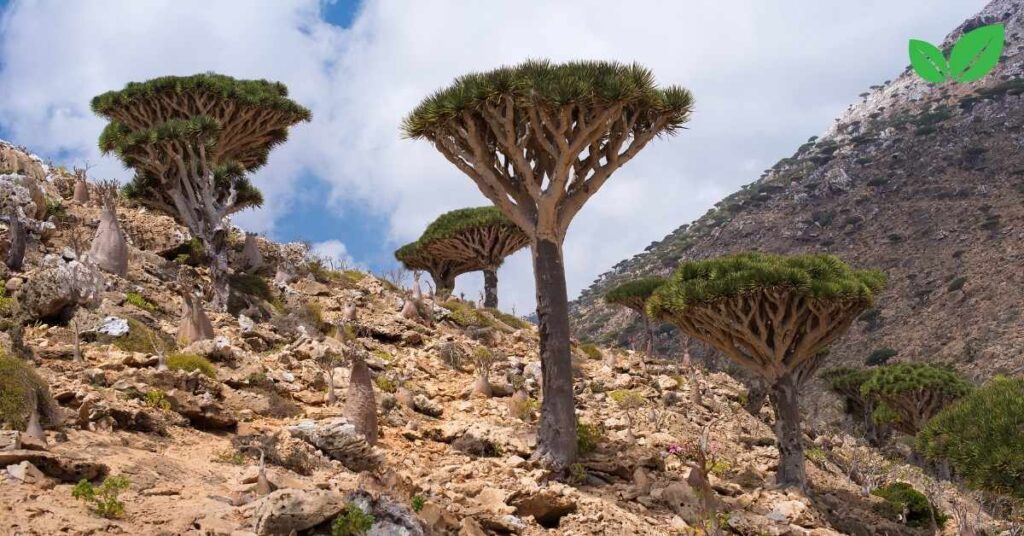
8.1 Communal Behavior
One of the most discussed aspects of Monocentropus balfouri is its communal nature, which contrasts sharply with the solitary habits typical of most tarantulas. This behavior has piqued the interest of researchers studying sociality in spiders, offering insights into the evolutionary benefits of communal living among invertebrates.
8.2 Popularity in the Exotic Pet Trade
The striking appearance and communal behavior make Monocentropus balfouri a highly sought-after species among tarantula enthusiasts. Captive breeding has helped meet this demand and offers a way to study its behavior under controlled conditions. However, this popularity necessitates strict regulation to prevent negative impacts on wild populations.
8.3 Research Opportunities
The unique characteristics of Monocentropus balfouri make it an excellent candidate for further research into topics such as social behavior in spiders, the effects of environmental stressors on desert-dwelling species, and the adaptive significance of its coloration.
9. Conclusion
Monocentropus balfouri, the Socotra Island Blue Baboon, is a prime example of how life can adapt to specific and often harsh environmental conditions. Its physical and behavioral adaptations enable it to thrive in the semi-arid, rocky terrain of Socotra Island. The tarantula’s communal tendencies, striking blue coloration, and ecological role make it a subject of both scientific interest and conservation importance.
Understanding and preserving Monocentropus balfouri’s environmental niche contributes to broader efforts to protect Socotra’s unique biodiversity. Conservation strategies focused on maintaining the natural habitat and preventing illegal wildlife trade are vital for ensuring the survival of this remarkable tarantula.
Efforts to study and appreciate species like Monocentropus balfouri deepen our comprehension of ecological systems and the evolutionary strategies that sustain life in some of the world’s most challenging environments. Through this understanding, we can better appreciate the interconnectedness of life and the importance of preserving the delicate balance of ecosystems for future generations.
Read More: Nhandu chromatus: Understanding Its Unique Habitat and Ecological Role

